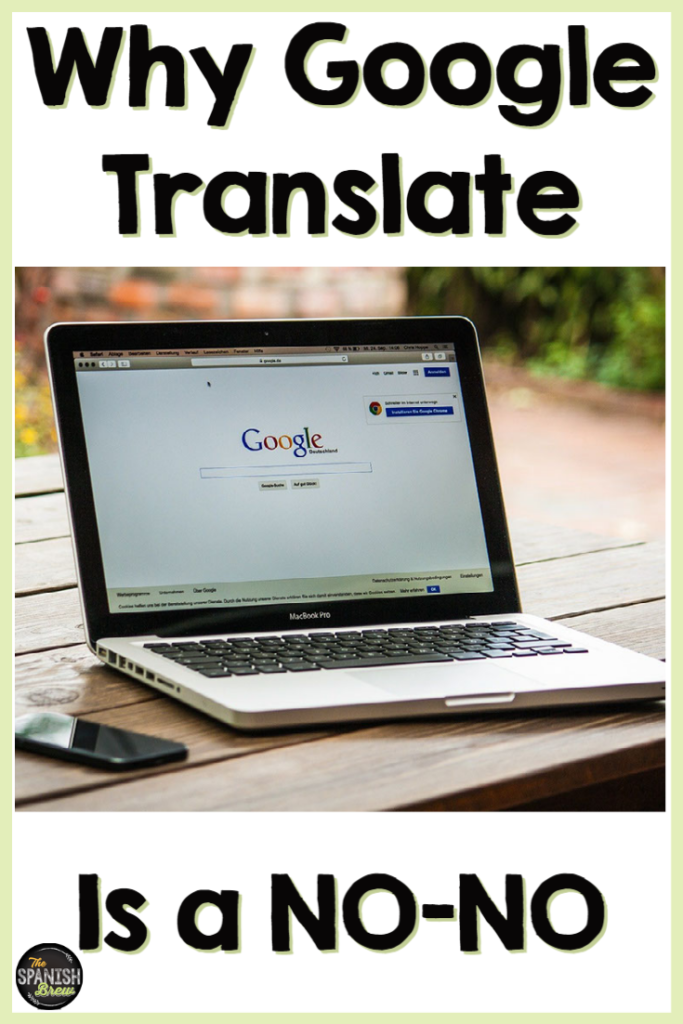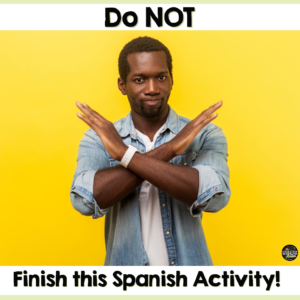Every year I give a big spiel to my students and parents about not using Google Translate in my class. And every year I STILL have students, especially in Spanish one, that try to get away with it. It’s so obvious, right? And then I have to have that conversation all over again with the student and family. Have you ever been in this situation? What reasons do you give to your students? Read on to find out my top four reasons why we don’t use Google Translate in the Spanish classroom.
It’s not your own work /Spanish.
If it’s not actually your Spanish, I can’t give you good feedback to help you improve. And Google couldn’t really care less if I fix their mistakes.
It has a lot of errors
Just because Google Translate tells you this is how you say it in Spanish does not by any stretch of the imagination mean that it’s correct. Have your students translate something they know well, like a song, into Spanish, and then back again into English so they can see how different it looks.
It doesn’t teach you how to communicate
You aren’t building your communication skills by simply copying and pasting from Google Translate.
It’s cheating.
Does your school have a policy on plagiarism? My school is very strict about academic integrity. So I put my translation policy on my course syllabus. Make sure you have a clear policy stated for students and parents to see. I distribute this to my families at the beginning of the year so if ever there’s an issue we can refer back to it. You might even consider having your students and parents sign the course syllabus.
Certainly any conversation about academic integrity and cheating is uncomfortable. But, I have found that the more upfront and clear I am with my expectations, the easier it is. Plus, if your students understand the reason behind prohibiting Google Translate, they will be less likely to use it, especially if you’re giving tasks appropriate for their level.
Have you had any experience with translators in your classroom? Have any advice? Drop a comment below!





No Comments